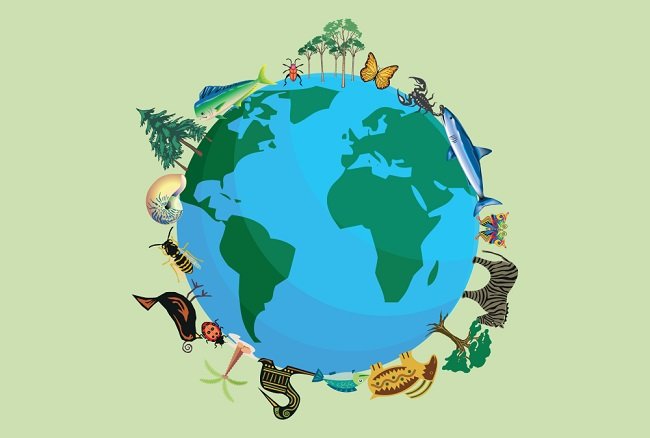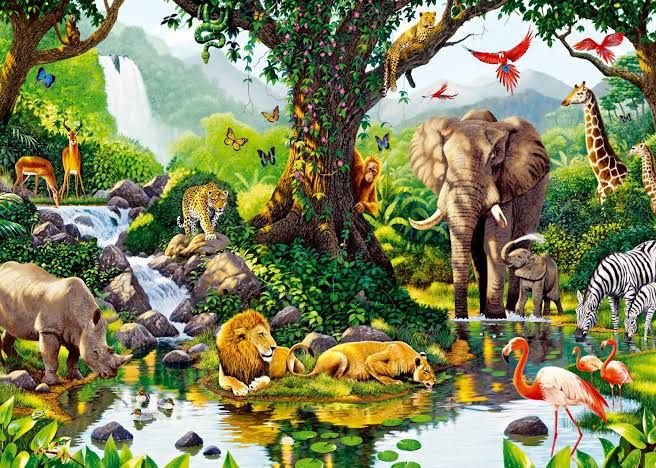Biodiversity is the web of life which keeps us alive. From the algae that first evolved into photosynthesis, turning sunlight into food and carbon dioxide into oxygen, to the goats, sheep, and horses that give us travel, milk, and meat, human life is interdependent with other species. But assuming other organisms are only important, it would be hubristic to justify their life just because they are useful to humanity.
The flash of colour when a butterfly alights on a flower or the heady petrichor scent of wet earth when the rain first falls on streptomycete bacteria in the soil… These are not ‘things’ that nature has evolved to provide to humans. They are testimony to the evolutionary twists and turns over the centuries and millennia that shape the world as we see it today.

We take the biodiversity around us for granted. But a report collected by 455 biologists in 2019, published by the Intergovernmental Science-Policy Forum on Biodiversity and Ecosystem Services, cautioned that 1 million species of animals and plants are facing extinction due to human impacts on the planet. Not only the great and iconic species – the tiger, rhinoceros and elephant – are under threat. Populations of bees around the world collapsed.
Pollination fails when bees disappear and crop yields drop. Last year, when a frog-killing fungus wiped out worldwide frog populations, many snake species also declined, starving because they lost a major source of food. Life is interdependent and by wiping out all the others, no species – even humans, with all their ignorance – can survive.
Against the backdrop of the ongoing ‘Great Extinction’, public understanding of the value of biodiversity plays a vital role in stopping ongoing attempts to wipe out species. The secret to better conservation is to get a better educated and more active public. Science writing plays a vital role in shaping such public awareness.
The recent revival of writing about nature in India is holding out hope. The growing popularity of nature books across India is profoundly satisfying. Independent bookshops say that increasing numbers of people are coming in, often with children in tow, to ask for books on wildlife and nature. An early introduction to the wonders of outdoor life, combined with the pleasure of reading about indoor species, curled up on a couch, book in hand, is the perfect way to develop a deeper understanding of nature.

The weekly columns of Janaki Lenin and her previous books, including My Husband and Other Animals (1 and 2), and A King Cobra’s Summer, are important contributors to the writing of nature in India. Her latest book, Every Creature Has a Story: What Science reveals About Animal Behaviour, a series of her columns in the science section of The Wire, continues in this tradition – with a major difference.
This book tracks the latest research about species’ behaviour, survival and evolution from around the world. Lenin tries to demystify the science for the reader, helping them understand the implications of recent discoveries that help us understand why elephants don’t get cancer, or how sharks navigate over thousands of kilometres without losing direction and wandering off course. She also gives the reader an insight into the excitement of doing research, in the laboratory and field.

These stories humanize the research process. Through the book’s perspectives, the reader learns not only what we know but what we don’t know and gets a glimpse of how complicated it is for scientists to understand the mysteries of evolution.
The new book by Janaki Lenin adds to India’s small yet growing body of writing on nature. The fact that the book instantly took the top spot on ‘ecology’ in the Amazon bestseller booklist (and has remained so for weeks) is heartening news for those involved in conservation. At a time when most writing on animals has firmly focused on large charismatic species like the lion, tiger and elephant, it is wonderful to see a book that appreciates all animal species for what they are – scientific wonders and miracles of evolution.

3 Comments
Pingback: Carnivores Ecosystem affected by Eating Human Food - Craffic
Pingback: Tardigrades: Water Bears Evolved To Survive Lethal UV Radiation Using Fluorescent Shield - Craffic
Pingback: Fisherman caught Mutant Baby Shark - Craffic